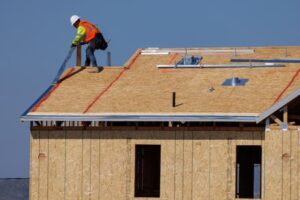By Saikeerthi . and Roshia Sabu
(Reuters) -Pipeline and terminal operator Kinder Morgan on Wednesday reaffirmed its annual profit outlook and said it expects demand for natural gas to grow substantially between now and 2030.
The company, which operates about 79,000 miles of pipelines, said it is banking on growth in electric demand primarily driven by demand from new and expanding data centers, especially those required to support AI.
Houston, Texas-based Kinder Morgan had said in January it continues to have a bullish outlook for natural gas demand due to demand from LNG export facilities and increased exports from Mexico.
This comes at a time when natural gas prices declined 20.4% in the first quarter of 2024 compared to a year earlier.
“Increase in AI demand per management could lead to a 7-16 bcf/d increase in gas demand by 2030 adding another growth driver alongside US LNG exports” says Stephen Ellis, analyst at Morningstar.
The company reaffirmed its 2024 profit forecast at $1.22 per share, which it had raised in January to reflect the acquisition of NextEra Energy Partners’ STX Midstream assets.
Kinder Morgan also met the first-quarter profit estimates, helped by higher volumes in its natural gas pipelines segment.
The natural gas pipeline segment saw a boost from higher margins realized on the company’s storage assets and higher volumes on its gathering systems, with additional boost from the STX Midstream acquisition, it said.
Adjusted core profit from the company’s natural gas pipeline segment was $1.52 billion, versus $1.43 billion a year ago.
“The interesting thing on the call is that KMI expects to carry lower levels of debt into the future, potentially getting higher ratings from credit agencies and better feedback from investors” said Bill Selesky, analyst at Argus Research.
Kinder Morgan reported an adjusted profit of 34 cents per share for the January-to-March quarter, in line with the LSEG estimates, and approved a 2% increase to its quarterly dividend.
(Reporting by Saikeerthi and Roshia Sabu in Bengaluru; Editing by Shilpi Majumdar and Shailesh Kuber)





